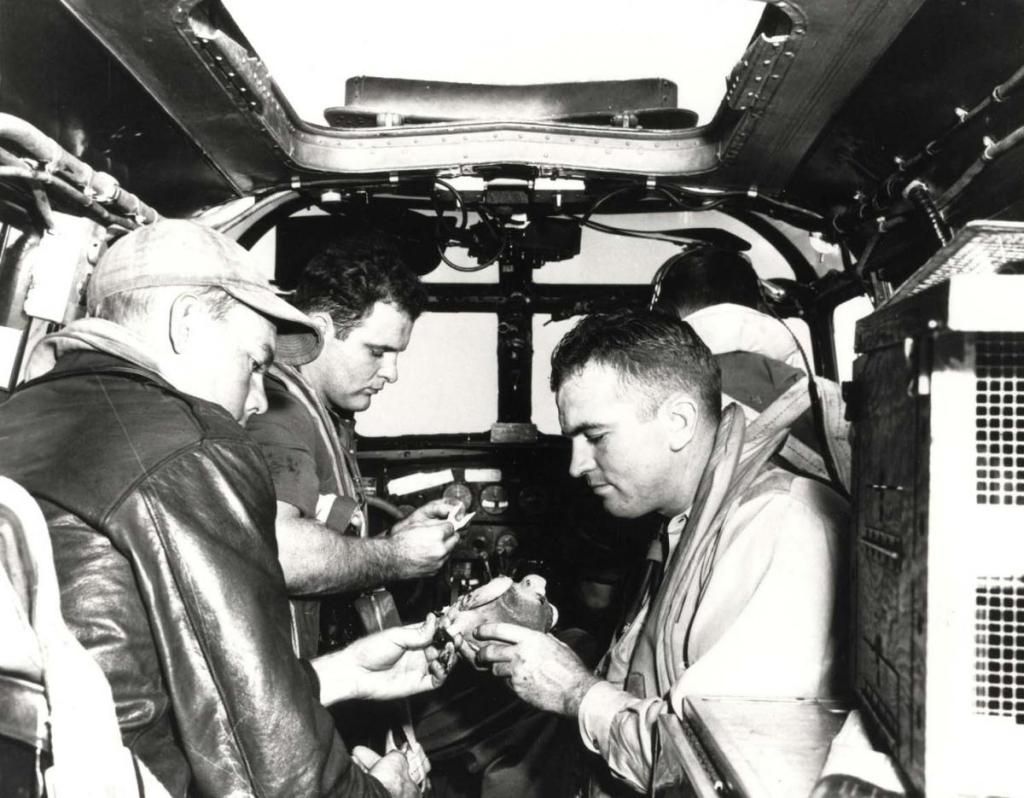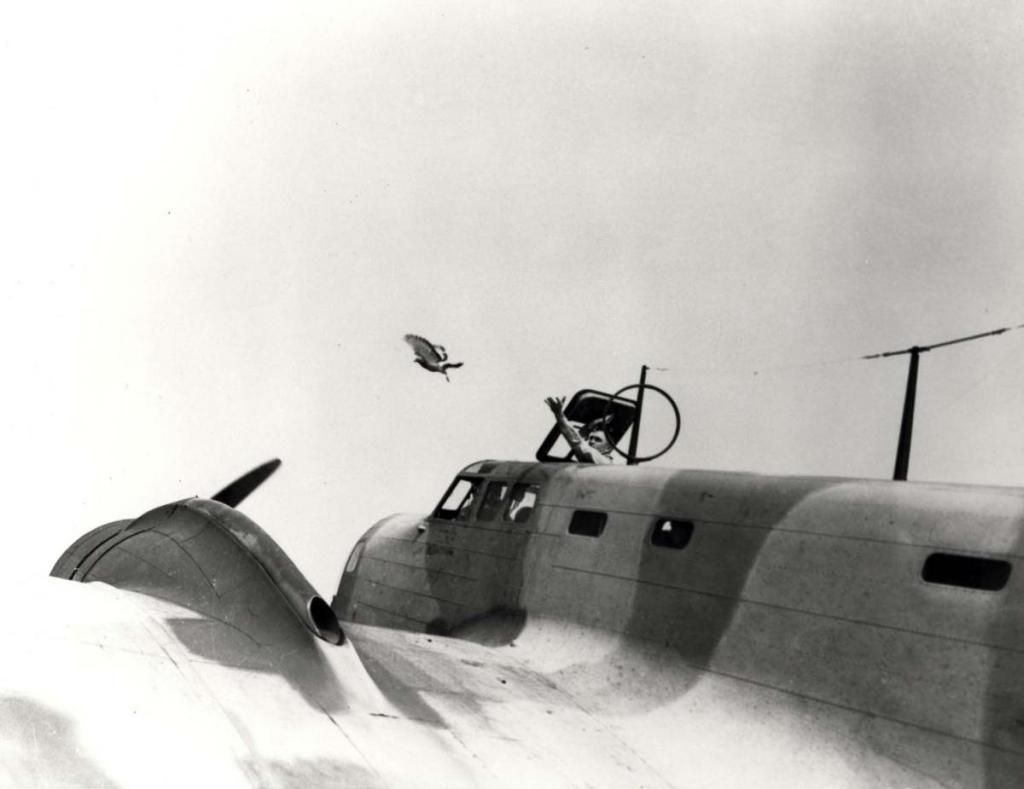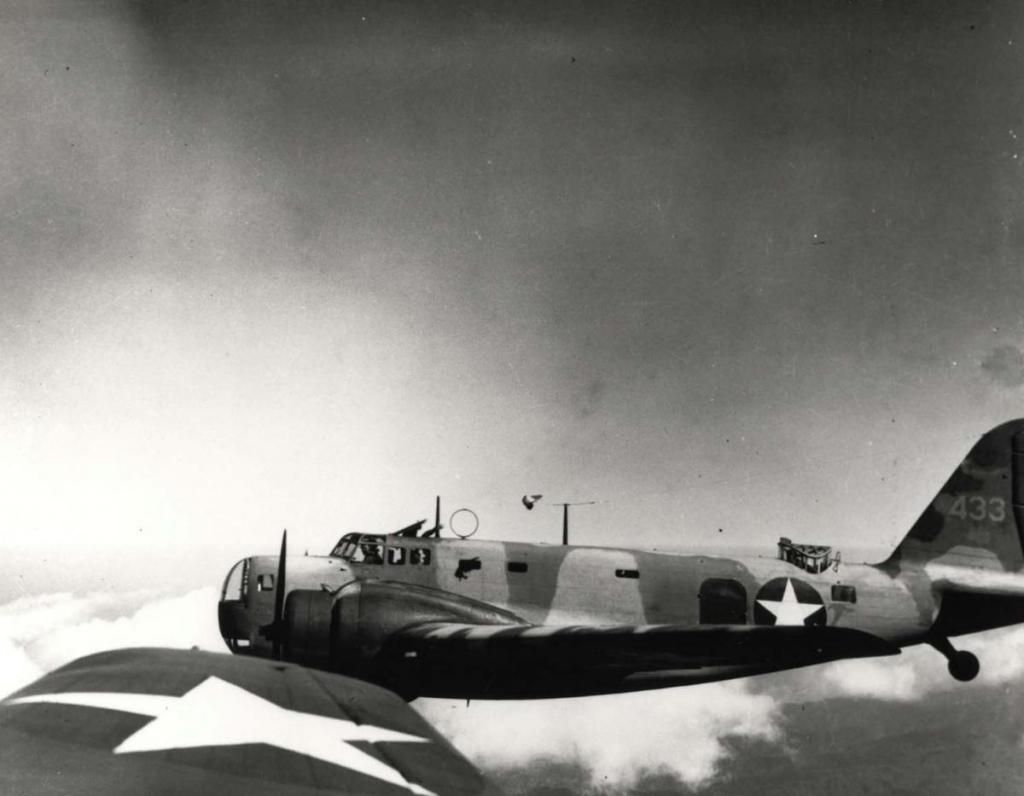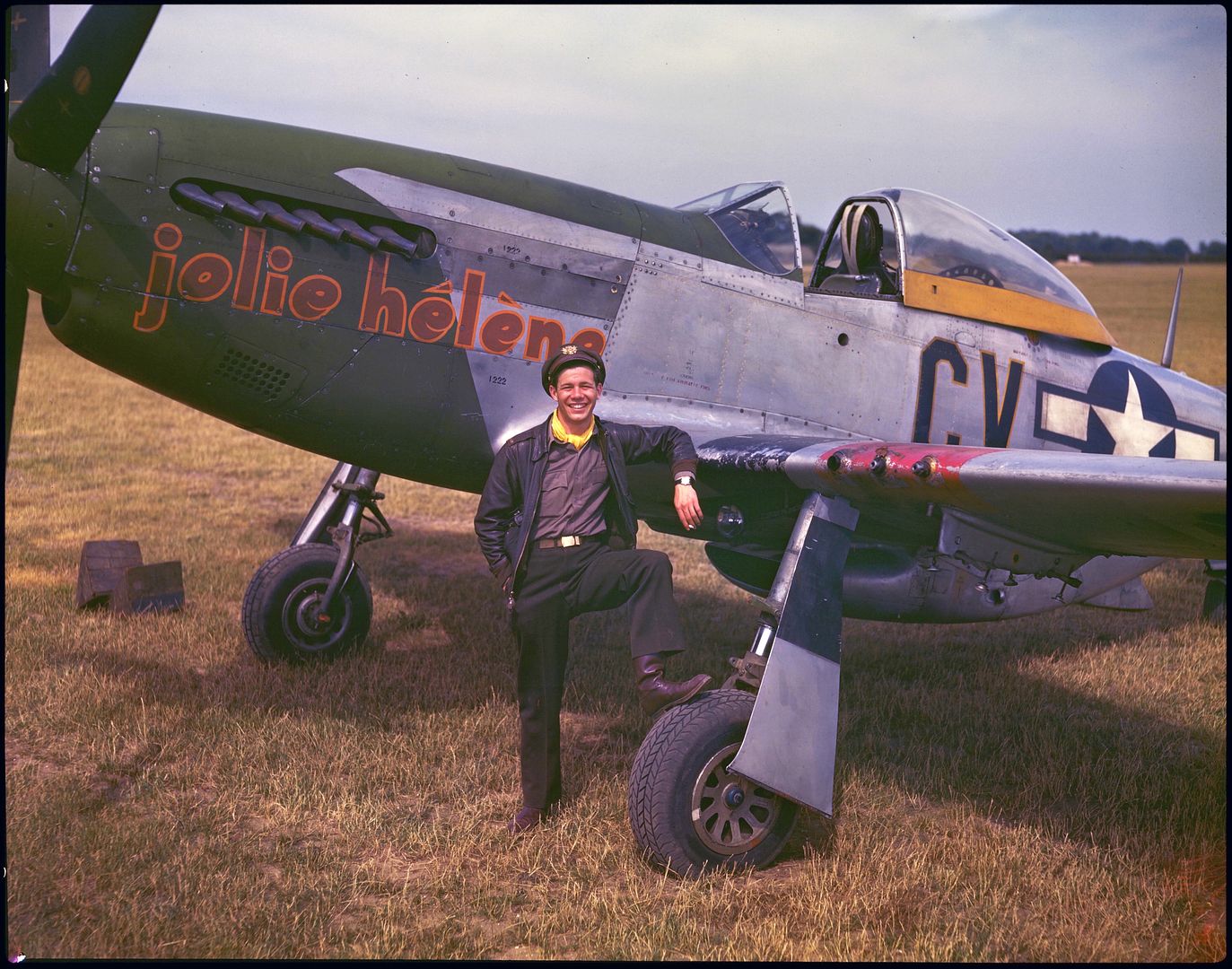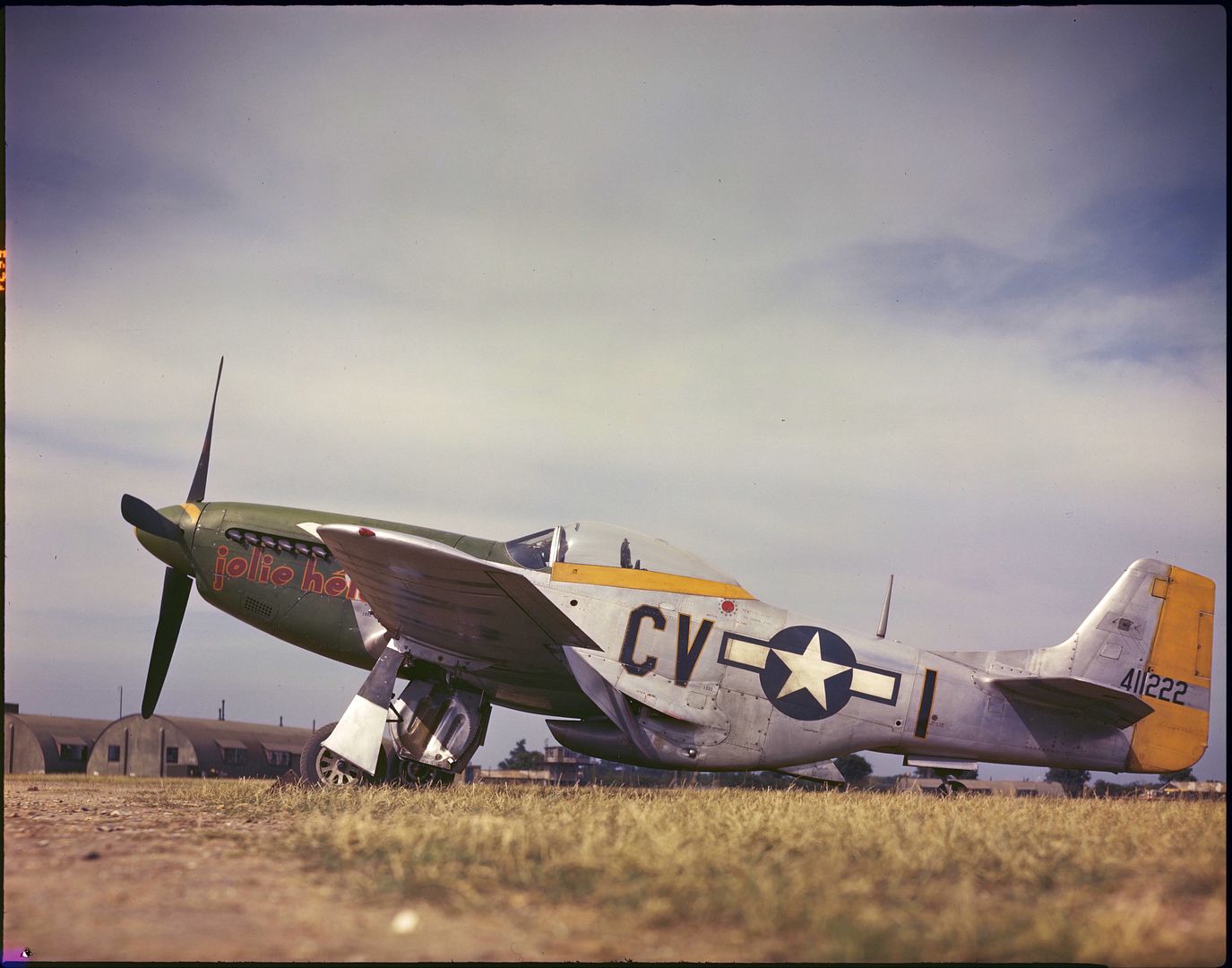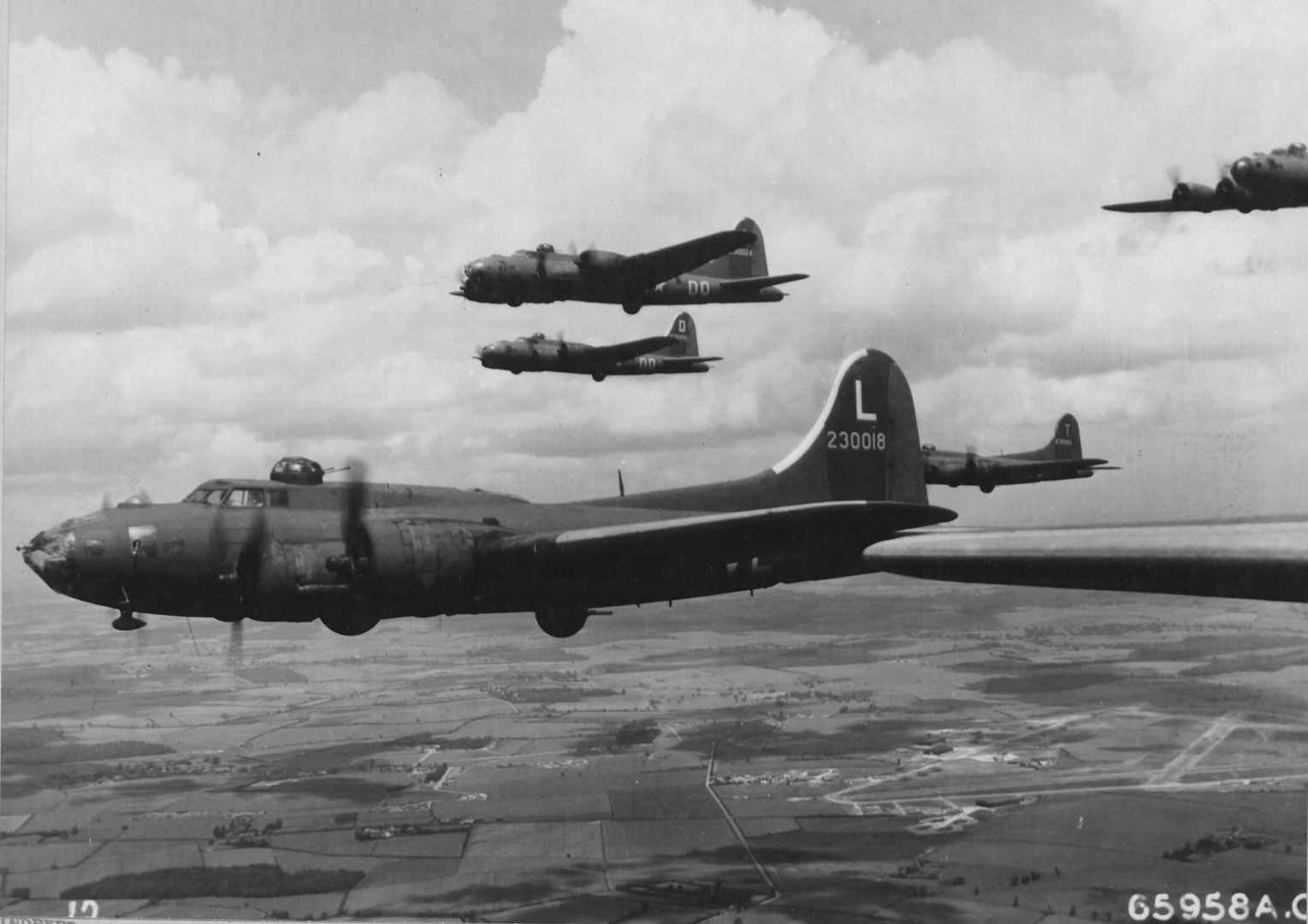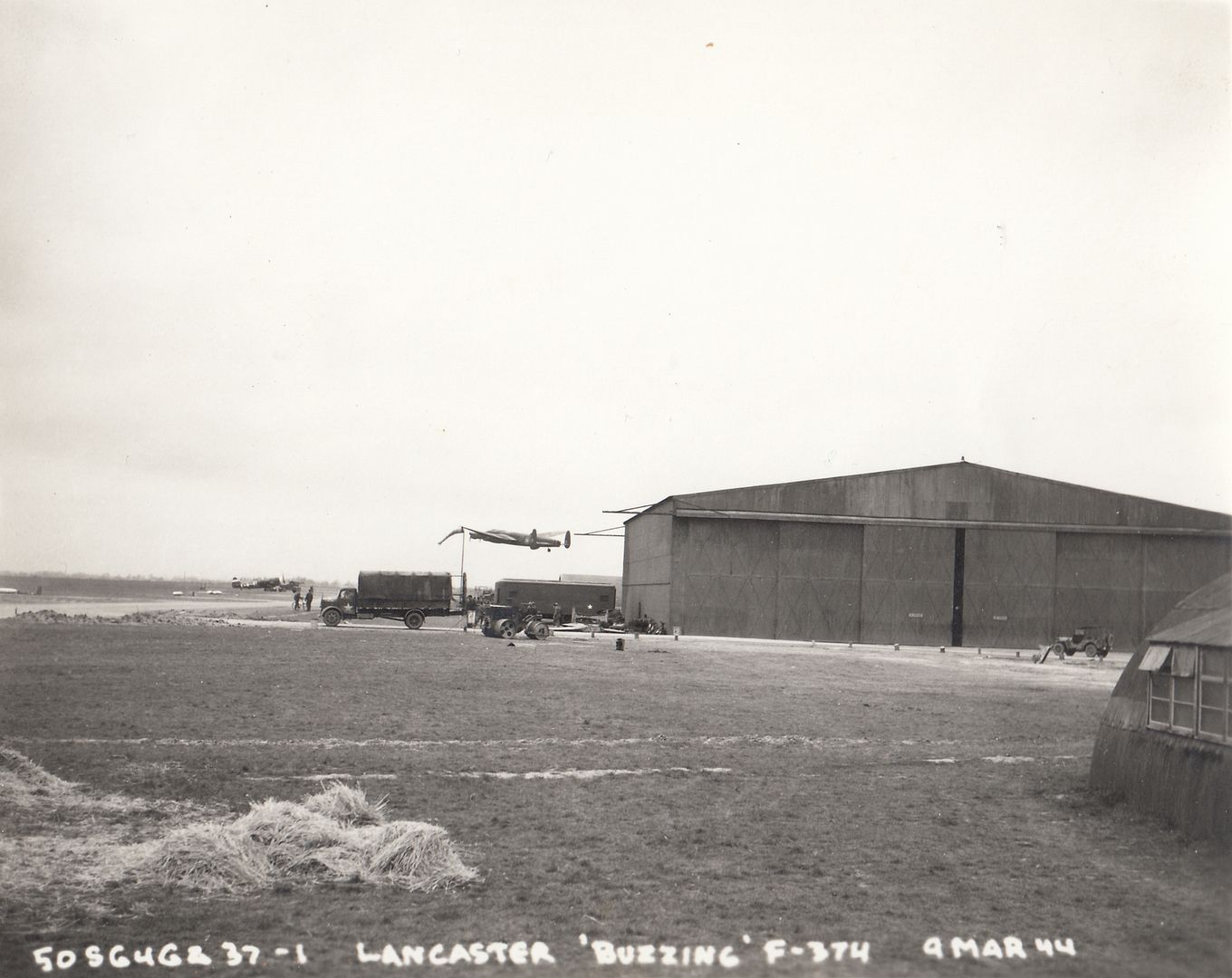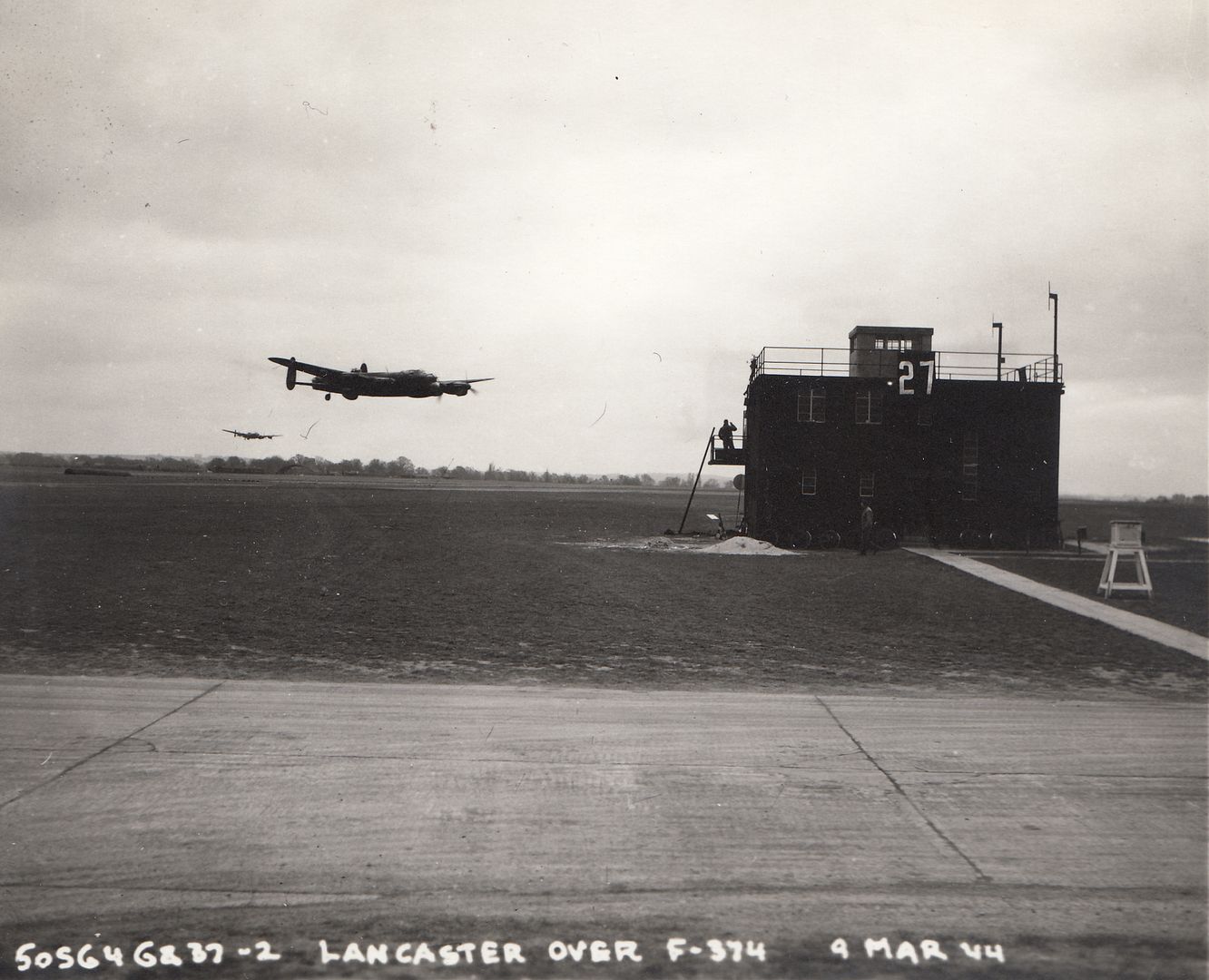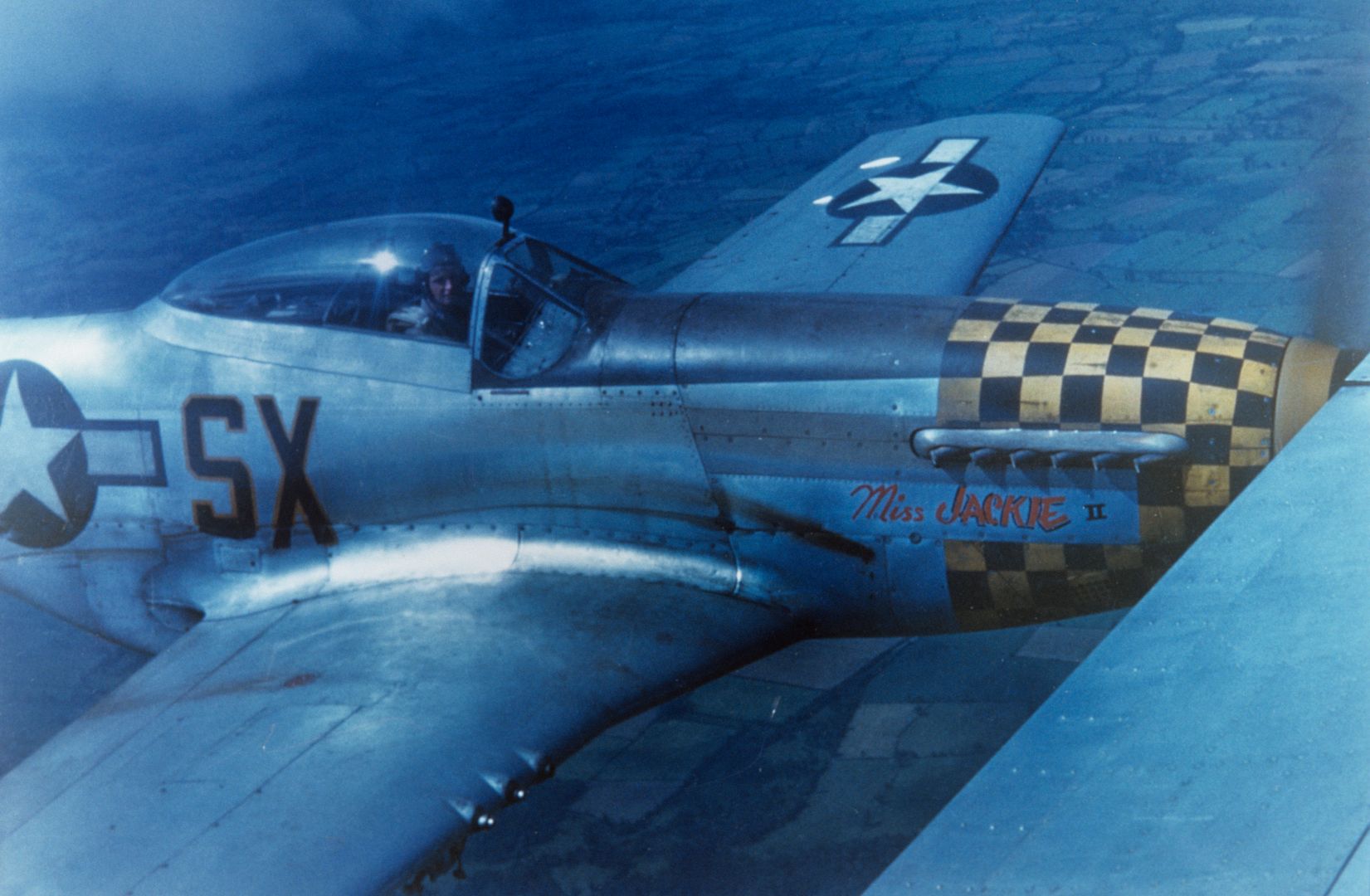Forums
- Forums
- Axis And Allies Forum
- General Discussion
- Photo of the week
Photo of the week
Post a reply
- Go to Next topic
- Go to Welcome
- Go to Introduce Yourself
- Go to General Discussion
- Go to Screenshots, Images and Videos
- Go to Off topic
- Go to Works in Progress
- Go to Skinning Tips / Tutorials
- Go to Skin Requests
- Go to IJAAF Library
- Go to Luftwaffe Library
- Go to RAF Library
- Go to USAAF / USN Library
- Go to Misc Library
- Go to The Ops Room
- Go to Made in Germany
- Go to Campaigns and Missions
- Go to Works in Progress
- Go to Juri's Air-Raid Shelter
- Go to Campaigns and Missions
- Go to Works in Progress
- Go to Skinpacks
- Go to External Projects Discussion
- Go to Books & Resources
-
10 years agoThu Dec 17 2015, 01:57am
 Main AdminMid week bonus
Main AdminMid week bonus
"The Vultee fighter did not meet British requirements as a fighter but they agreed to accept 100 of them. They received the designation Vanguard I and were assigned the serial numbers BW 208 to BW 307. The British planned to use them as operational or advanced trainers in Canada. The July 1941 edition of the magazine Aeronautics contained a photograph of Canadian World War One ace Air Marshall William Bishop, V.C., in front of a Vanguard in R.A.F. livery at Downey. The caption stated the fighter was powered by a 1,600 h.p. engine and credited it with an unconfirmed maximum speed of 400 m.p.h. This same information had been published in earlier articles in the magazine. "
-
10 years ago
 Main AdminTwo this week, taken at Weimar Germany 12 May 45.
Main AdminTwo this week, taken at Weimar Germany 12 May 45.
American soldiers inspect Me 262 A-2a/U2 (W.Nr. 110 555)
`The bomber second prototype (W.Nr. 110 555) was completed in January 1945 and featured a modified bombardier?s compartment ? the Lotfekanzel II. The aircraft also received alternative designation Me 262 V11. The prototype first flew in February 1945 and by the end of March had completed 16 test sorties. The aircraft was lost on March 30, 1945 when it crashed during a forced landing attempt.`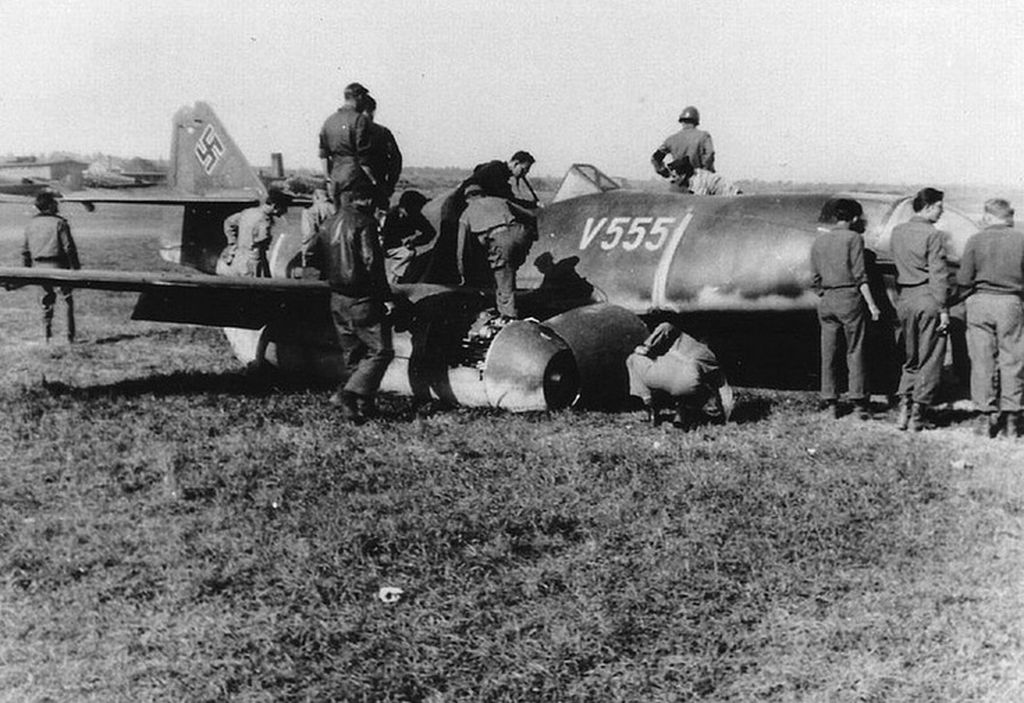
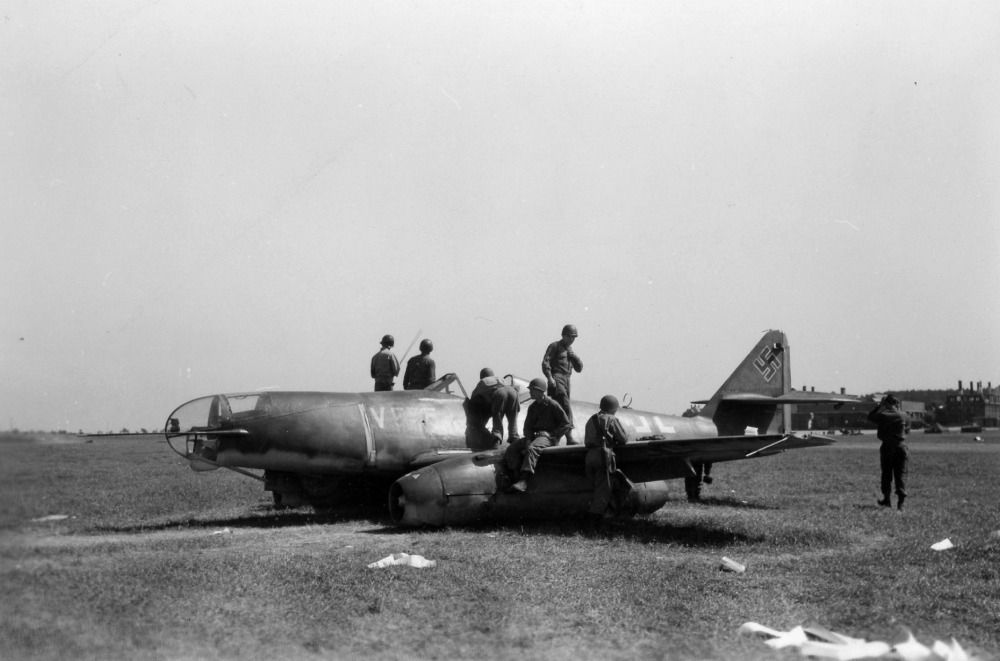
-
10 years ago
 Main Admin
Main Admin -
 Main AdminMid week bonus.
Main AdminMid week bonus.
U.S. Army Air Forces Lockheed P-38F-1-LO Lightning fighters (identifiable are s/n: 41-7540, 41-7594, 41-7598) of the 1st Fighter Group during a refueling stop in Iceland on their way to England in the summer of 1942.
41-7540 was flown by Lt. Elza E. Shahan (27th Fighter Squadron) on 14 August 1942. He shot down a Focke-Wulf Fw 200 Condor over the Atlantic, together with 2nd Lieutenant Joseph Shaffer of the 33rd FS Squadron, 8th FG, (flying a Curtiss P-40C). This was the first USAAF victory over a German aircraft in World War II.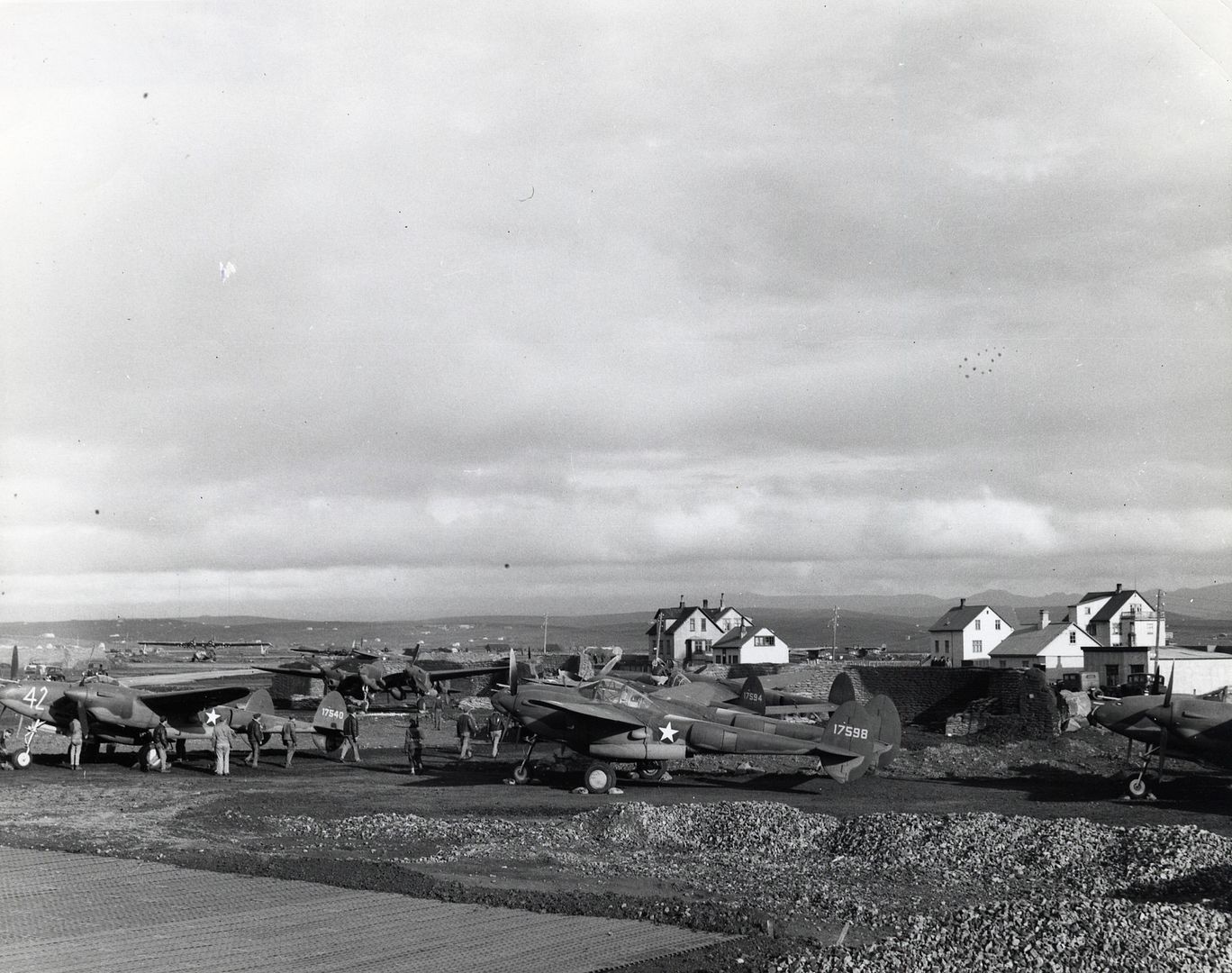
-
9 years agoSat Dec 26 2015, 02:19pm
 Main Admin
Main Admin -
9 years agoWed Dec 30 2015, 09:09pm
 Main AdminMid week bonus.
Main AdminMid week bonus.
Three this week of Capt Harvey Mace & his Mustangs P-51B 43-6923 G-4O "Sweet Helen", & P-51D Mustang s/n 44-13558 G4-B "Sweet Helen II" of the 362nd FS, 357th FG (3.5 kills)
Below text from Merle C. Olmsted
Market-Garden
Lt. Harvey Mace was one of the original pilots with the 362nd Squadron, having joined during the P-39 days in California. He was, however, low in seniority, which is probably the reason he was fingered in March 1944, after 11 missions, for an instructor's job with a fighter training unit. Late in June he returned to the squadron and resumed his combat tour. By September he was a flight leader on the Arnhem missions. He wrote a fascinating account of his experiences on the 18th of September 1944:
"I was leading Dollar White Flight which was on the extreme left of our squadron, which was on the extreme right of the group. While scanning the sky, I finally spotted one or two bogies high in the fringes of the sun. With full attention I was soon able to see more--a lot more. Although they were too high to identify, they were not flying like friendlies, so I reported them to the group leader. His response was something like, "Well, OK, we'll climb up and take a look," and turned the group to the left and started climbing. This maneuver put me dead last in the climb. Before long, with a change in positions I was able to make out the whole group of bogies. It's too difficult to count under these conditions, but looking at the size of our group of about 50 planes, I estimated about three times that many bogies, or around 150.
"Soon one fighter peeled off and came down on our angle, about 500 or so feet above us. As it got closer I was able to identify it as an Me-109. Whether its intent was to scout and see what we were, or bait in hopes of breaking us up I'll never know. I marveled at the discipline of our group at not breaking up. Only later at home was my pride somewhat deflated when in asking some of the rest of the squadron about it, no one seemed to have seen it!
"At any rate, the 109 made positive identification of the big mass, as enemy fighters to me. The next thing that happened was two fighters came down head-on and firing--sort of at our group as a whole. This made retaliation an absolute necessity and someone near the lead took them on. In quick succession the Germans kept sending down small numbers at a time and those in the lead of our group were being engaged until finally the only ones left still climbing toward the main bunch (now down to about 100) were me and my wingman, Chuck Weaver. My element leader and his wingman were gone.
"At this point I was awestruck to note that the scene was just like the cover depictions of the big WW I air battles on such mags as 'Flying Aces,' etc. It was one big dogfight, fighters circling, twisting, going down in flames--the works.
"Soon it was my turn, one lone 109 dropped down in front of me, out of range but weaving enticingly while two shooters dropped down above me. The plan, I'm sure, was for me to nose down after the one while the two shooters would get on our tail and finish us off. But I would not have any part of it,; my mind was still on the main bunch and I continued climbing. With this the bait weaved back and forth ever closer in what I'm sure he thought was a tempting manner. At the same time the two shooters were ever more attentive and somewhere along there I could no longer keep track of the main bunch. I started climbing straight at the two shooters, and from here on I never saw the main bunch again.
"Finally the bait 109 weaved so close that he was a threat. At this point I decided I could have to quickly drop my nose, shoot him down, and quickly resume the climb at the two shooters to keep them in check. I could no longer keep track of Chuck so had no idea what he was up to. The main dogfight had dissipated and they had all disappeared. I confidently dropped my nose when the bait was at a nice 90 degree deflection, fired a burst and quickly resumed the climb before the shots even got to him.
Well, it was a clean miss and all it did was arouse his competitive spirit, and he broke into me in a vicious attack. All planning on my part was out the window. I countered and managed to gain the upper hand in the dogfight that followed. But between the wild maneuvering and the stupid gunsight I couldn't get a clean hit. (Like some other original 357th pilots, Mace did not like the new K-14 computing sight.)
"I was able, through it all, to keep an eye on the two shooters above and where they seemed somewhat confused and tentative at first, they were beginning to act increasingly agitated and with my frustration at not being able to get a clean hit, I felt my situation was getting desperate. I finally decided to close on the guy and chew his tail off with my prop. "On the next pass and firing my guns, I closed to the point where a collision didn't look avoidable even if we both tried. As the impact drew near I ducked low to get behind the engine in case I bit off more than his tail. The moment passed and no collision. I couldn't believe it! When I raised up and cranked around to continue the pursuit, he was in his chute. I did not see any good hits and thought I just scared him out. Chuck Weaver told me later that he had stayed with me until near the end of the fight when he stalled and spun out. Upon his recovery, he pulled up in time to see the German bail out and fired a burst 'sort of in his direction.' I didn't hear that or repeat it, since shooting at parachutes was a no-no.
"I had lost Chuck by this time, and re-established my climb after the two shooters who were still rocking back and forth watching me, but seemed unsure what to do. I kept scanning the sky to make sure I didn't get bounced, and on one scan I spotted two fighters closing fast on my tail--I was climbing hard at only about 170 indicated. I looked up again and the two shooters were gone, but I could not figure how they got so far behind me. Few, if any, airplanes can turn with a P-51 at 400 mph so I dropped my nose and poured on the coal hoping to get near that speed before they got me in range.
"Looking at them occasionally from the corner, I had to wait for just the right time to break. Too soon and they cut you off and gotcha. Too late and they fire and gotcha anyway. Finally, after what seemed like hours (I'm sure it was only seconds) the moment arrived and I whipped around into a head-sagging maximum 360 degree turn. About halfway round, someone on the radio said
'Where'd he go, was he a 109?' I leveled out on the tail of two '51s which turned out to be two of our newer replacements. I answered, 'No, I'm not a 109 and since I'm on your tail you should be glad of that.'
"I had them join up and after a fast look around with nothing in sight, low on fuel and ammo, I headed them home." The only triple kill of the day was claimed by Lt. Gerald Tyler, leading Greenhouse White Flight, who shot down an FW-190 and two 109s. None of the pilots was seen to escape.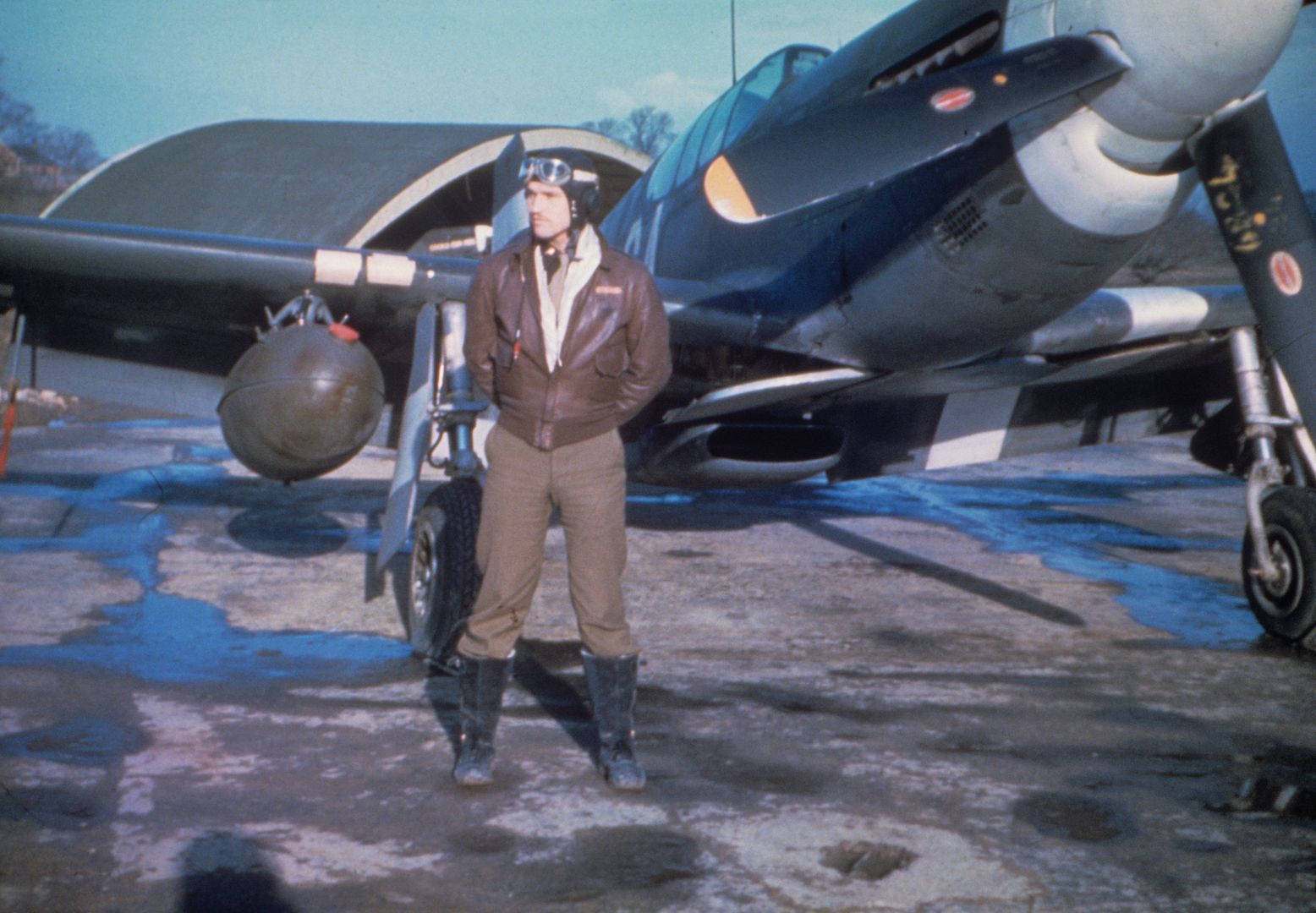
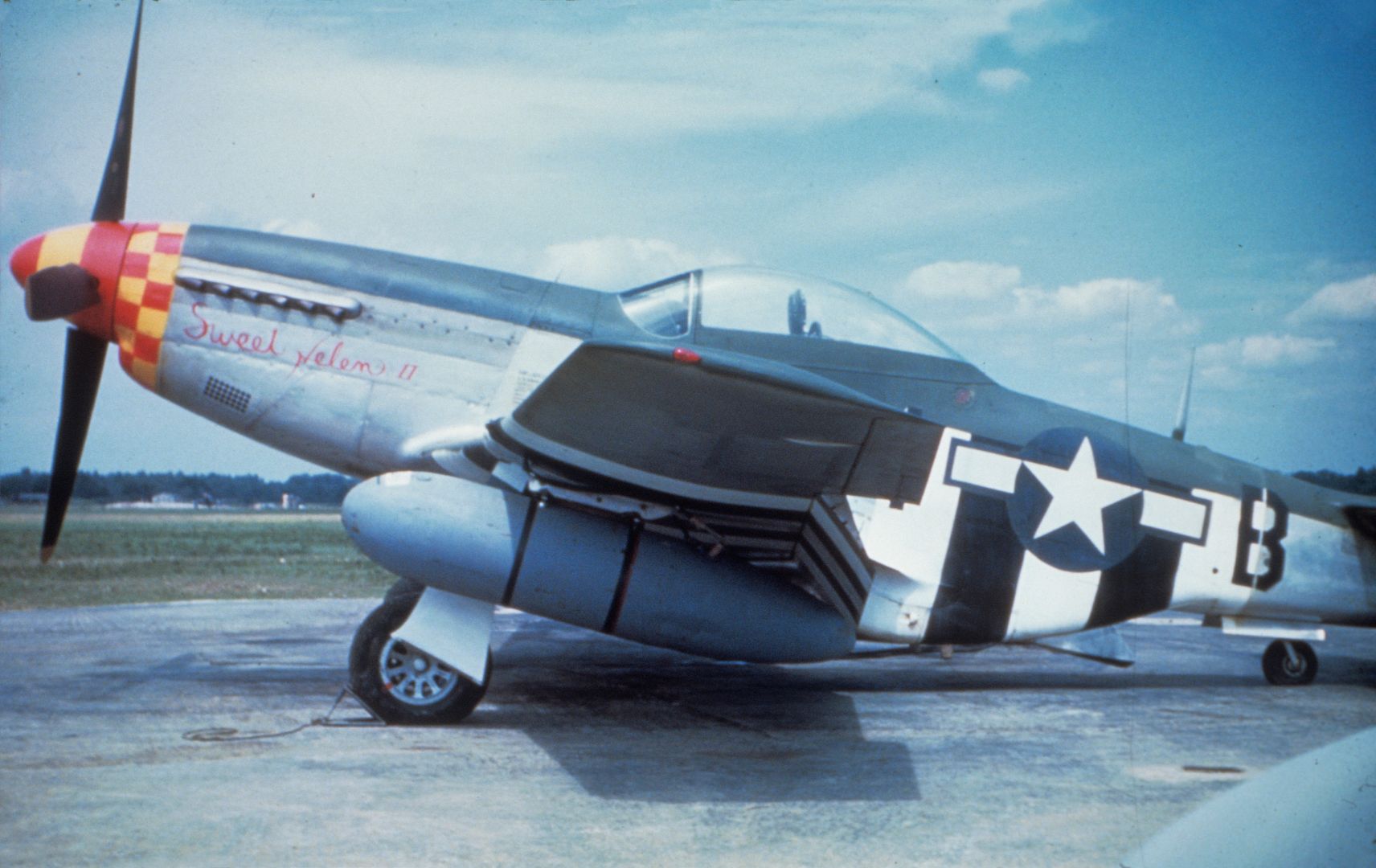
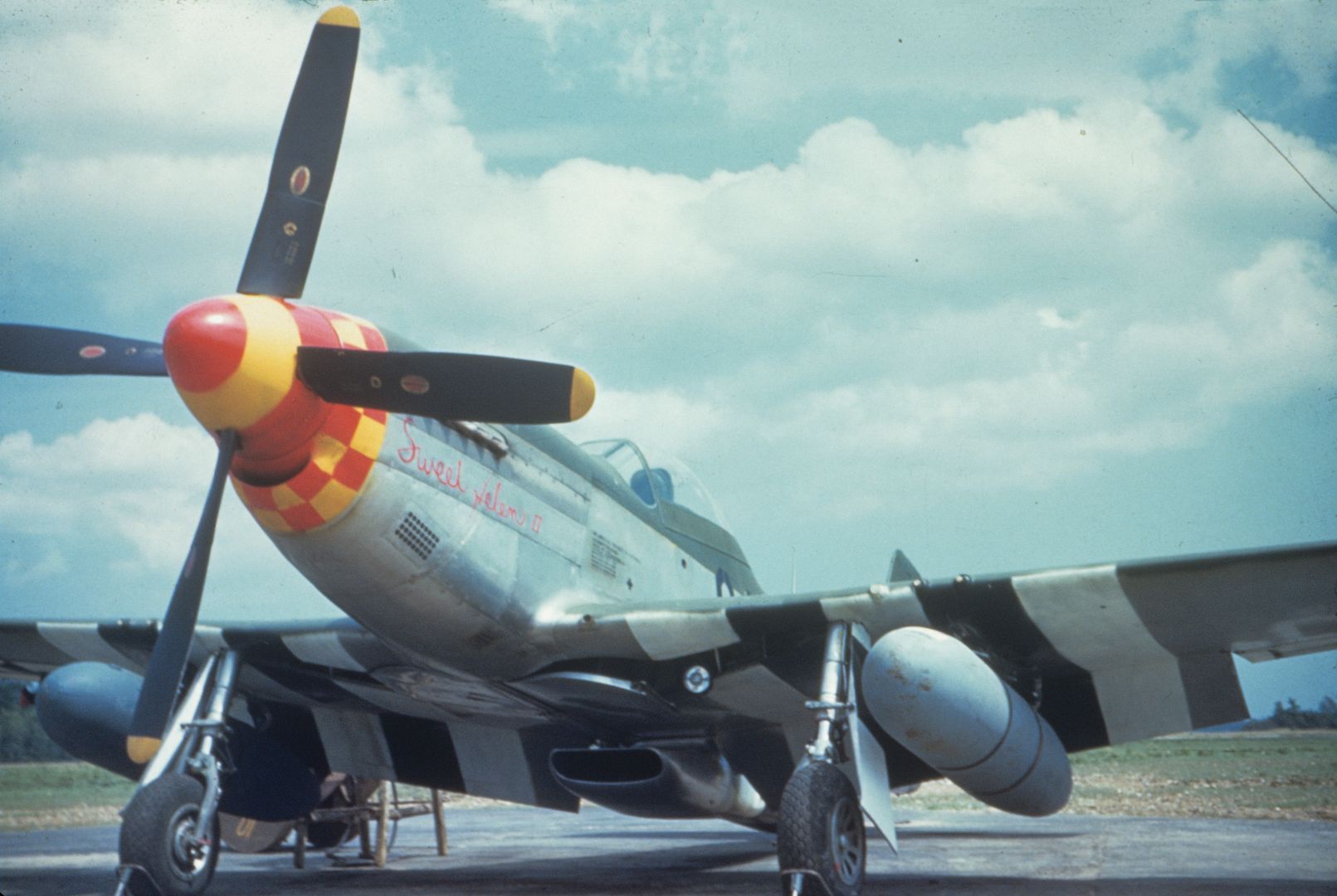
-
9 years agoFri Jan 01 2016, 09:56pm
 Main Admin
Main Admin -
 Main Admin
Main Admin -
 Main AdminSix this week all from Panama.
Main AdminSix this week all from Panama.
First Boeing B-17E Fortress 41-2504, assigned to 25th Bombardment Squadron in Panama, 1942, note the ASW.
The 25th Bombardment Squadron became the 25th Bombardment Squadron (Medium) on 6 December 1939 and then, on 20 November 1940, the 25th Bombardment Squadron (Heavy). Equipped with the Douglas B-18 Bolo the squadron had opportunity to put its new, long-legged aircraft to the test in October 1939, when two Peruvian flyers, en route from the United States to Lima, Peru on a long-distance flight, were reported missing between the Canal Zone and Peru. Although eventually found to have made an emergency forced landing in Ecuador, three B-18s of the squadron conducted extensive searches of the area along the 80th meridian some 250 miles to sea. The aircraft carried enough fuel for a flight of 11 hours duration, a capability which would place them in good stead in the Command in the years to come.
By 25 August 1941, with its pre-war strength at but five B-18s, the Squadron was re-equipped with B-17E Flying Fortresses. After the United States entered World War II, the Squadron had deployed to Salinas, Ecuador and the Galapagos Islands (shuttling patrols hack and forth) with four of the B-17Es, flying antisubmarine patrols over the Pacific approaches to the Panama Canal. These aircraft being joined by a B-18 by February. The main body of the Squadron left Salinas by 15 February and returned to Howard Field in early 1943, although a detachment was still in Ecuador as late as 30 June.
Assignment to the 6th Bombardment Group ended on 12 May 1943, when the Squadron was transferred to the 40th Bombardment Group and, the following month, the main body of the Squadron, which had been at Howard Field briefly between 16 May 1943 and 13 June, ended its 21 years of service in the Canal Zone, when it was reassigned to the United States.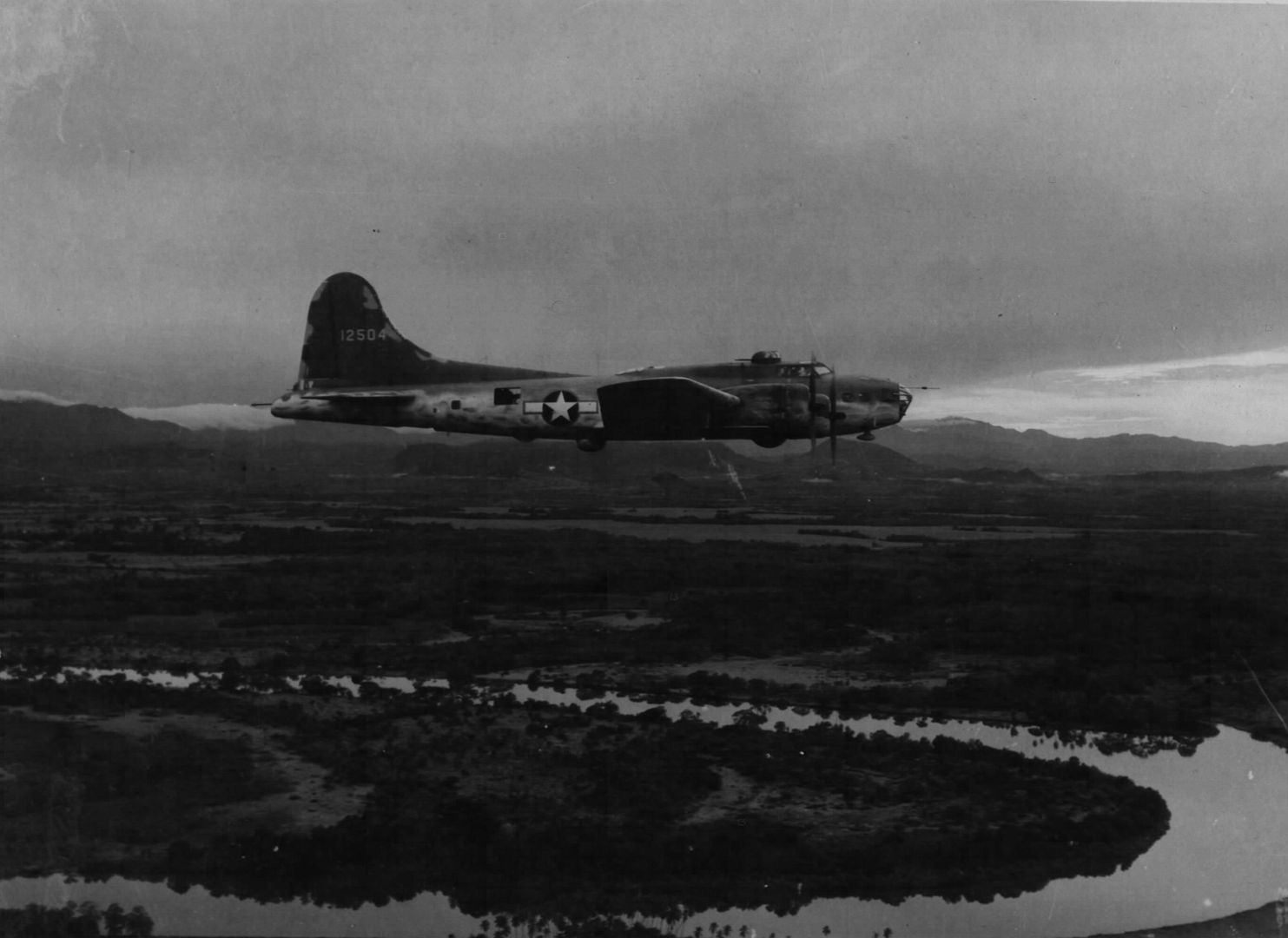
And below some nice colour shot of P-39's of the 24th Fighter Sq.
LINK- https://en.wikipedia.org/wiki/24th_Fighter_Squadron
Below Sgt Howard W Thomas installing a K-25 camera.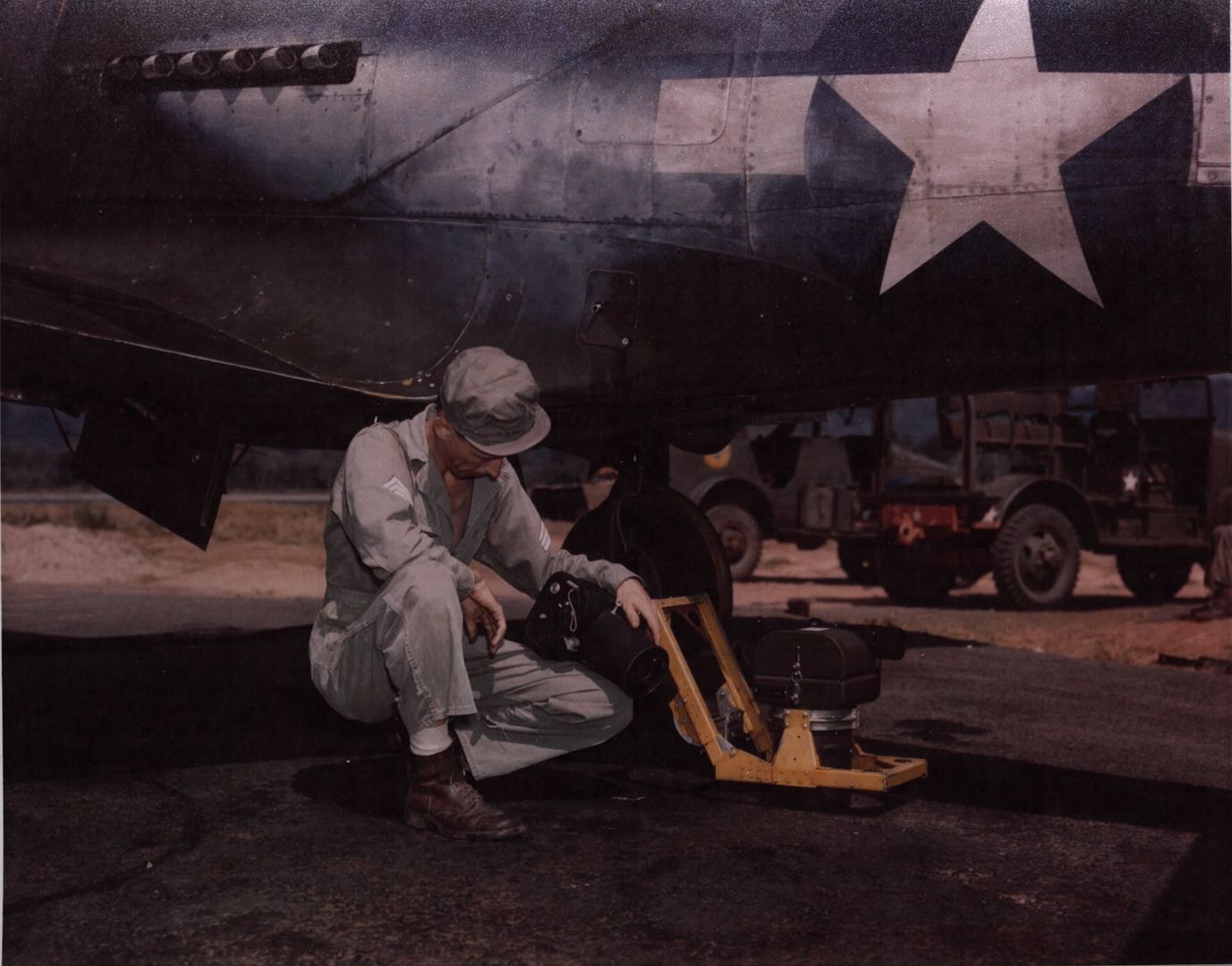
Below - .Private First Class Wolfram Cisenius A Radio Mechanic Services Radio Equipment On A Bell P-39 Aircobra.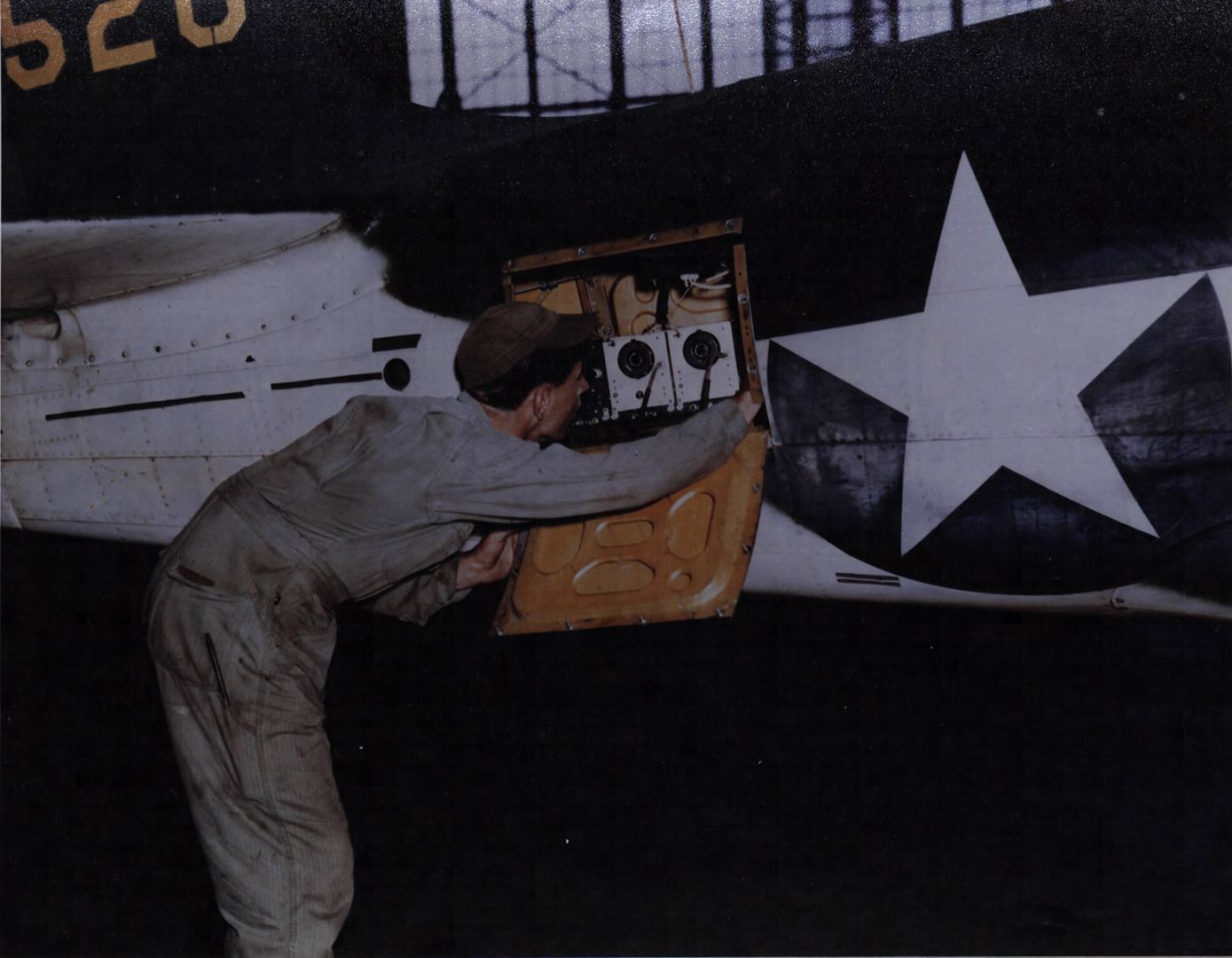
Below - Cpl. Samuel Bossard And Cpl. Thomas A. Cahill Service Wing Guns Of A Bell P-39.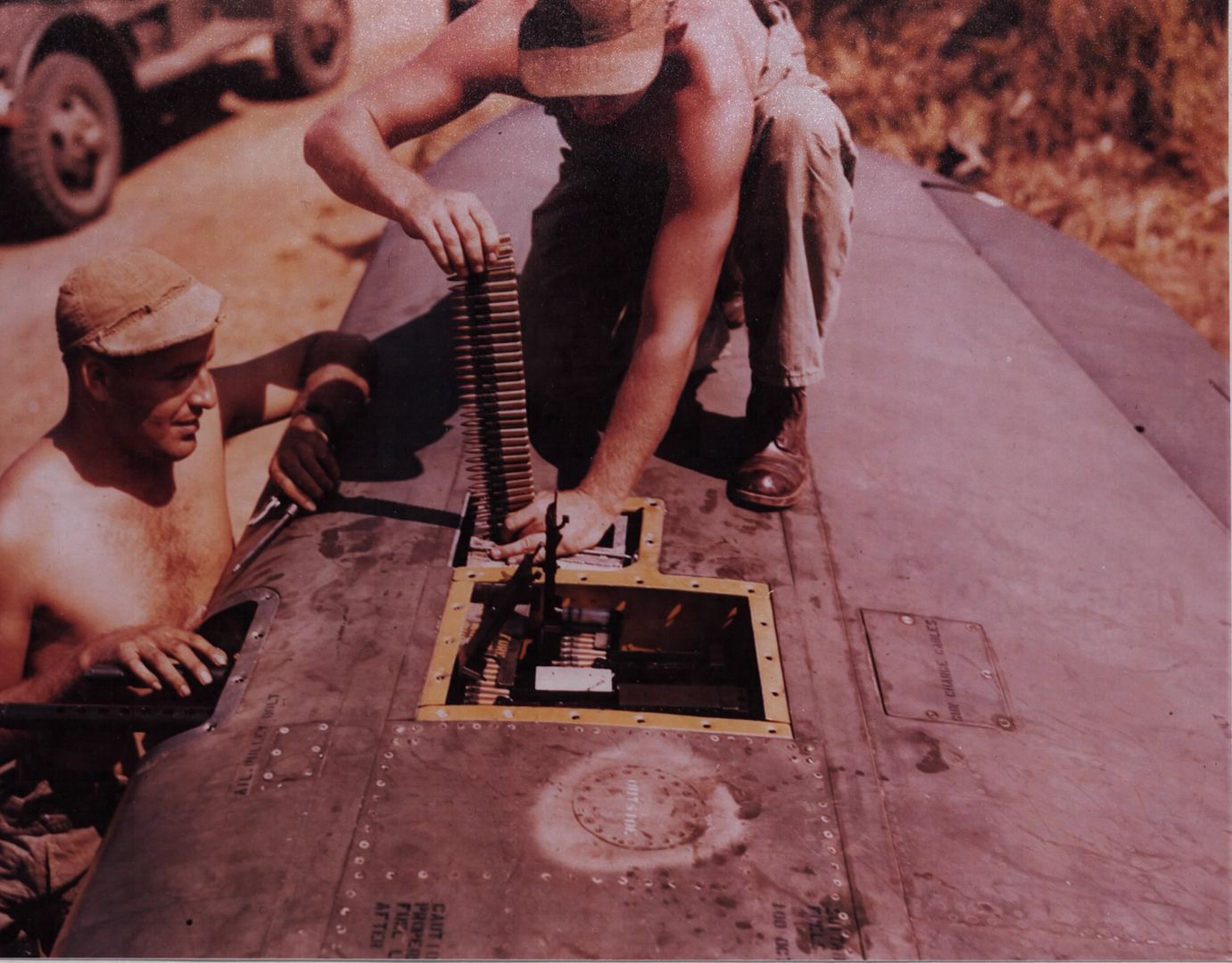
Below - Armorers Working On 50 Cal. Guns And 37Mm Cannon - Madden Field Panama.
Below - Engineering Hanger - Crew Working On A Bell P-39. Panama.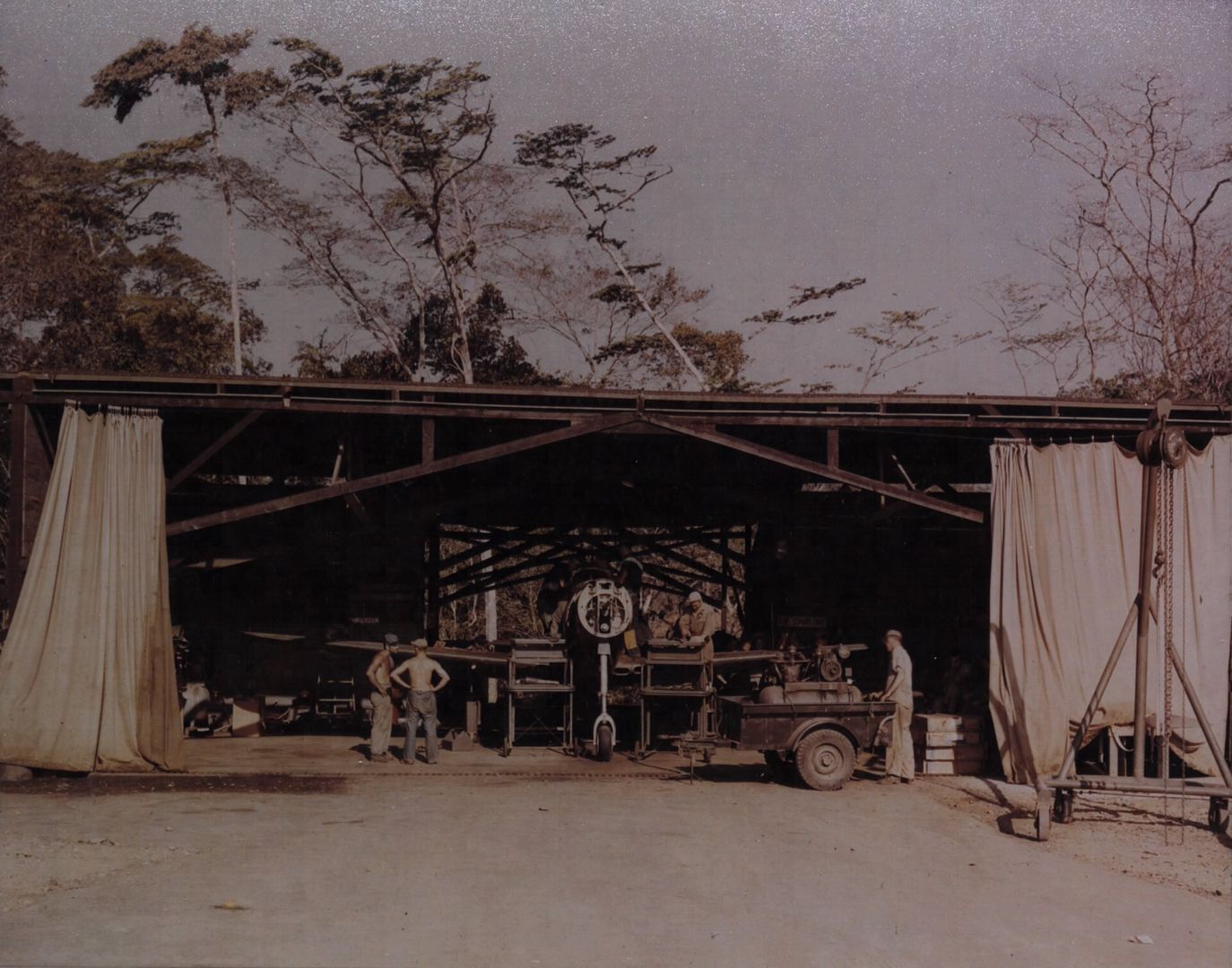
-
 Main Admin
Main Admin
Post a reply
- Go to Next topic
- Go to Welcome
- Go to Introduce Yourself
- Go to General Discussion
- Go to Screenshots, Images and Videos
- Go to Off topic
- Go to Works in Progress
- Go to Skinning Tips / Tutorials
- Go to Skin Requests
- Go to IJAAF Library
- Go to Luftwaffe Library
- Go to RAF Library
- Go to USAAF / USN Library
- Go to Misc Library
- Go to The Ops Room
- Go to Made in Germany
- Go to Campaigns and Missions
- Go to Works in Progress
- Go to Juri's Air-Raid Shelter
- Go to Campaigns and Missions
- Go to Works in Progress
- Go to Skinpacks
- Go to External Projects Discussion
- Go to Books & Resources
